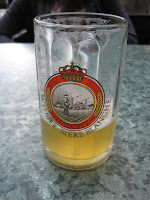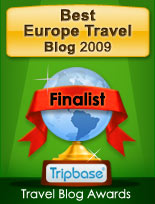 1. Fresh Flowers
1. Fresh FlowersAt my neighborhood's weekend market I can purchase an enormous, perfectly arranged bouquet of colorful fresh flowers for €10, or about $15. I recently bought 20 yellow roses for €6.90, which is roughly $10.35. The cost of fresh flowers in the U.S. usually keeps me away from them, but here in Brussels the Saturday shopping isn't done unless I have my weekly bouquet in hand.
2. Breakfast
It's not hard to find an expresso and a croissant for around €2, total. While not quite the breakfast of champions, it's delicious, filling, and only sets me back about $3. Sold.
3. French Wine
A good Côtes du Rône can be had for around €4.50. I found a white Gascogne that goes well with everything for €3.75. A really good bottle - one that makes you swear off non-French wines forever - can be had for less than €15. Impeccable vins de France for as little as $7 a bottle? Try finding that in the U.S.
4. Health Care
My American health insurance doesn't cover anything short of a life-or-death situation while I'm overseas. Big deal: visiting a specialist in Brussels cost me €40, or about $60. The prescription she wrote me cost €5.25. At around $8, that prescription cost me less out-of-pocket than my prescription copay costs me in the U.S. Thank you, government negotiated drug prices!
5. Train Tickets
Within-country travel - say, from Brussels to Antwerp - is not only cheap, it's also easy. Just go to the station, hand over a few small euros, and hop one of the dozens of daily trains that service your route. If you plan to travel to another country, you'll have to do a bit more planning, but your patience will be rewarded with amazing deals. I just booked a round-trip ticket to Paris for €40, and last weekend I traveled first class on a high-speed train to Cologne, Germany for only €50.
 6. Beer
6. BeerThere's no need to pay more than €2 for .25 liters of decent Belgian brew, to be enjoyed this time of year while cozily bundled up under the heated terrace of a café in Brussels. Yes, la vie est belle.












